Freelancing has gone from a side hustle to a serious career path for millions of people around us.
With remote work becoming more common since the pandemic and digital platforms making it easier to find gigs, workers are choosing independence over the traditional 9-to-5.
But how many people are actually freelancing right now? What platforms are they using? Which industries rely on them the most? And what does the future of freelancing look like?
In this roundup, we’re breaking down the most up-to-date number of freelancers stats today. Let’s dive in!

Number Of Freelancers Stats (Top Picks)
Freelancing has moved far beyond a niche career path. It’s now a major part of how people earn a living across the world.
Whether you’re trying to understand the big trends or want a quick snapshot, these numbers give you a clear view of how much the freelance world has grown and where it’s headed next.
Here are the number of freelancers stats that reveal the most important highlights at a glance.
1. There are an estimated 1.57 billion freelancers working across the globe today (2025 data).
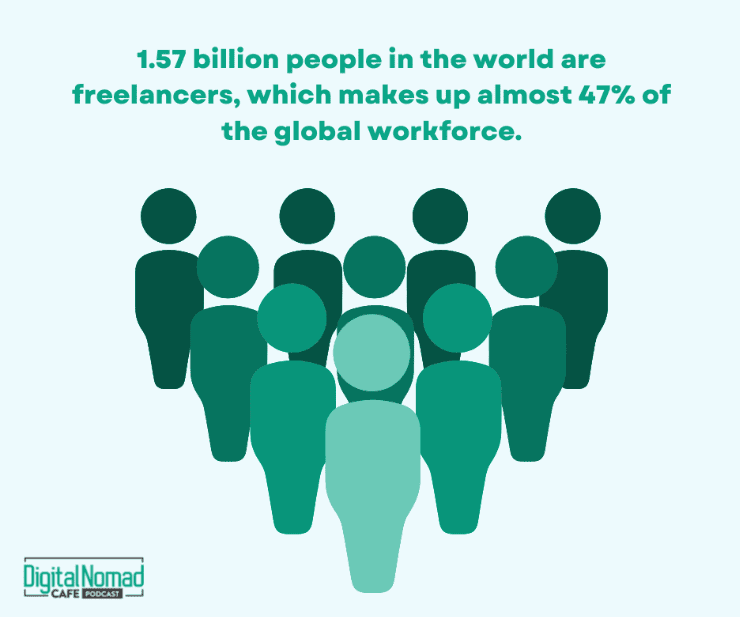
Number of freelancers worldwide
2. The global share of self-employed workers fell from 55.5% in 2000 to 46.7% in 2024.
3. The United States has over 64 million people working as freelancers.
4. Around 52% of Gen Z and 44% of millennials are currently doing freelance work.
5. Web design is the most common freelance skill, offered by 36% of freelancers.
6. Niger has the world’s highest self-employment rate, with 95.1% of its workforce working for themselves.
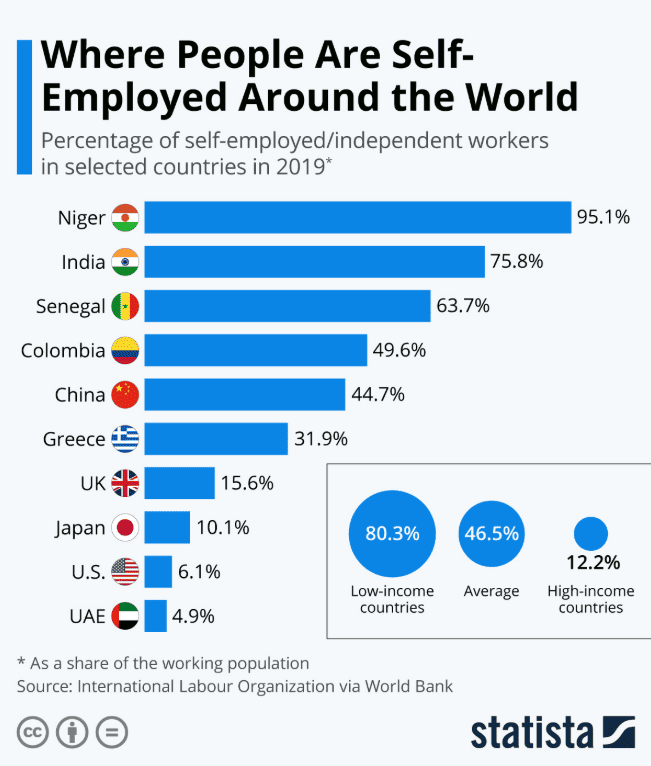
Percentage of self-employed workers in selected countries
7. The arts and design industry has the highest share of self-employed workers at 77%.
8. Over 70% of freelancers find work through online marketplaces and gig websites.
9. 70% of freelancers say they chose freelancing to have a better work-life balance.
10. According to Keywords Everywhere, search terms related to “freelance” get high monthly traffic on Google, and that number has been rising steadily over the last few years.

How Many Freelancers In The World?
Freelancers now make up a significant part of the global workforce, and that number keeps growing every year.
In some countries, nearly one-third of workers are already freelancing in some form.
The rise of remote work (especially since COVID-19) and digital platforms has made it easier than ever to go independent, and the global numbers reflect that shift.
Here are the number of freelancers stats that show how big the global freelancing scene really is.
11. Around 1.57 billion people worldwide are self-employed, making up about 46.6% of the global workforce.
12. The percentage of self-employed workers has gradually declined over the past 20 years, down from 55.7% in 1999 to 46.7% in 2024. Even in 2015, self-employed workers made up 48.2% of the global workforce, showing a steady drop over time.
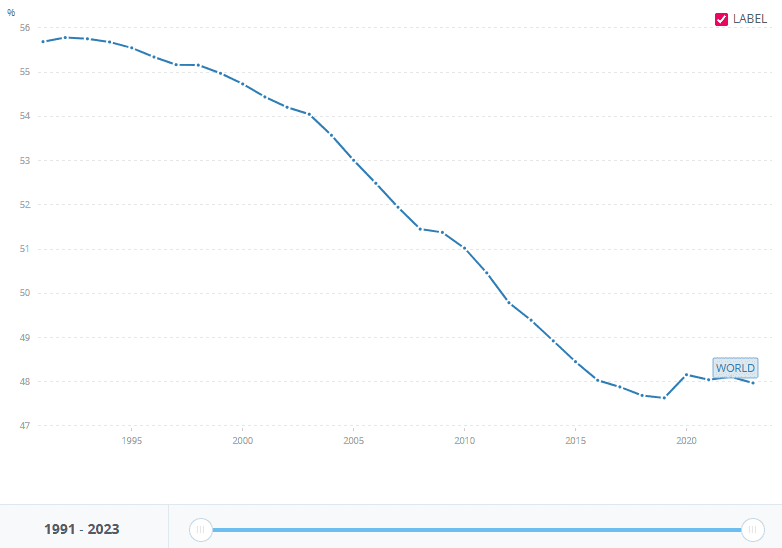
Decline in the percentage of self-employed workers
13. In the United States, the number of freelancers grew by 90% between 2020 and 2024.
14. By 2027, over 86.5 million Americans are expected to be freelancing, which would be more than half of the total U.S. workforce.
15. According to ResearchGate, there are about 163 million freelancer profiles on online labor platforms worldwide. Out of those, around 19 million people have landed at least one job through a platform.
16. About 5 million freelancers have either completed 10 or more projects or earned $1,000 or more through these platforms.
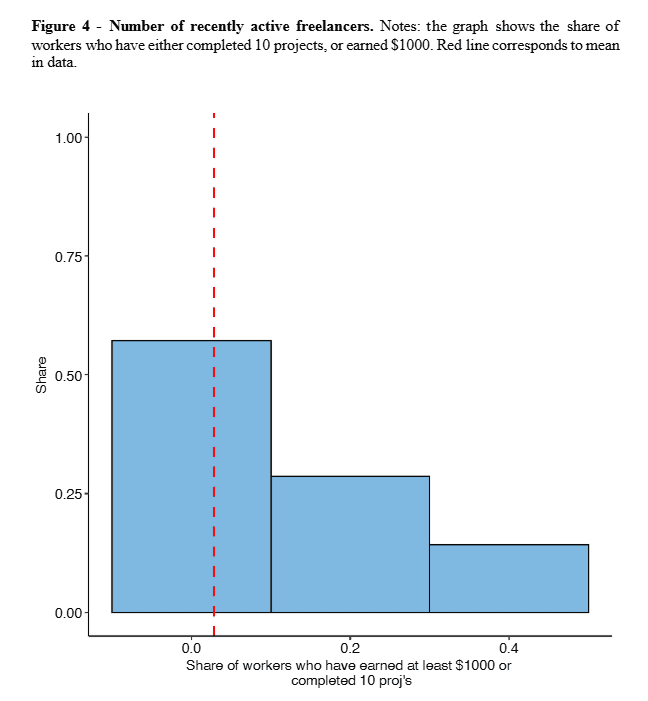
Share of freelancers who have earned $1000 or complete 10 projects
17. Over the last 10 years, an average of 1 million more people have started freelancing each year, based on data from a recent Gen Z survey by Upwork Research Institute.
Number Of Freelancers By Region
Freelancing doesn’t look the same in every part of the world. In some regions, it’s deeply established, while there are other regions where it’s still catching on.
Local economies, job markets, and internet access all shape how freelancing grows in each place. Looking at the regional breakdown helps explain why freelancing is booming in some areas more than others.
The following number of freelancers stats show how freelancing compares across different parts of the world.
18. As of 2025, the United States leads the world in freelance numbers, with about 86.5 million freelancers, followed by the United Kingdom and Canada.
19. India is home to approximately 15 million freelancers, making it one of the top freelance markets in the world.
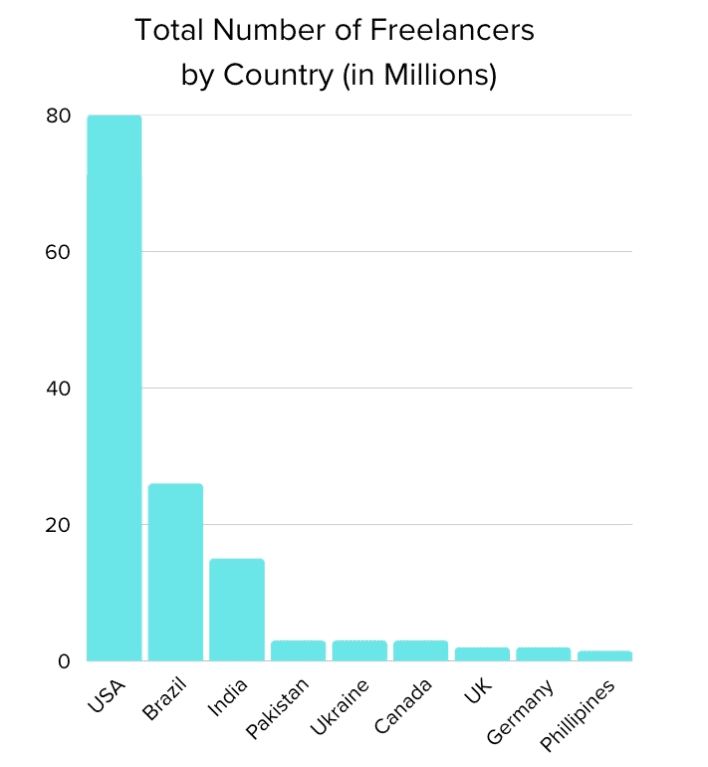
Freelancers by country
20. Over 64 million Americans are freelancing, which equals 38% of the U.S. workforce, according to Upwork. This is 4 million more than in 2022.
21. Freelancers in the U.S. contribute roughly $1.27 trillion to the national economy.
22. Here’s a list of countries with the highest number of freelancers:
- United States – 60 million
- United Kingdom – 4.2 million
- Brazil – 25 million (mostly self-employed freelancers)
- Pakistan – over 3 million
- Ukraine – more than 500,000 active freelancers
- Philippines – 1.5 million freelancers
- India – 15 million freelancers
- Bangladesh – over 650,000
- Russia – over 1.3 million
- Serbia – more than 100,000 active freelancers
23. South Africa saw a 126% increase in freelancers, the highest growth rate reported.
24. The United States had a 68% rise, while Canada saw a 64% increase in freelance workers. Australia and the UAE also ranked high, with strong growth in the number of freelancers.
25. Niger has the highest self-employment rate in the world, with 95% of its workforce working independently.
26. The Central African Republic follows with 93.2%, and Chad comes next with 92.6%.
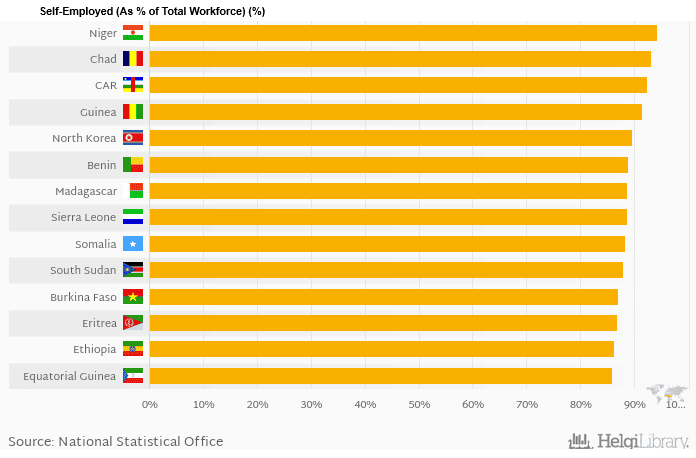
Countries with the most self-employed workers
27. On the other end, Qatar has the lowest freelancing rate, with just 0.4% of people working as freelancers. Other countries with very few freelancers include Kuwait, Bahrain, Oman, and Belarus.
28. In low-income countries, around 80% of the workforce is self-employed. In high-income countries, the average is much lower, only 12.4%.
Number Of Freelancers By Platform
Upwork, Fiverr, Freelancer.com, Toptal—each of these platforms offers a different kind of opportunity, and freelancers flock to them for different reasons.
Some prefer higher-paying clients, while others look for volume and speed. The way freelancers use these platforms says a lot about the current state of online work.
Here are the number of freelancers stats that reveal which platforms are attracting the most workers.
29. Upwork has over 18 million freelancers registered from more than 180 countries around the world.
30. Out of those, 3.7 million are from the United States, making up 66% of Upwork’s freelancer base.
31. Freelancers from India make up around 9% of all users on Upwork.

Percentage of Upwork freelancers
32. While Fiverr doesn’t share official numbers, it’s estimated that the platform has at least 380,000 active freelancers, based on usage and buyer data.
33. Freelancer.com reports over 60 million registered users, making it one of the biggest freelance platforms globally.
34. These users come from 247 countries and territories, offering skills in more than 2,700 different categories.
35. LinkedIn’s Services Marketplace has seen 10 million people sign up as freelancers. That’s about 1% of LinkedIn’s total user base, which is now over 1 billion.

LinkedIn services marketplace has 10 million freelancers
36. Guru.com has over 2 million registered users, and about 800,000 of them are freelancers offering services.
37. 99designs has a community of over 1 million freelance designers from 144 countries, connecting creatives with clients looking for design work.
38. PeoplePerHour has more than 2.4 million skilled freelancers and it serves clients across 180+ countries.
39. So far, freelancers on PeoplePerHour have completed over 2 million projects and earned more than £130 million through the platform.
Number Of Freelancers By Age Group
People of all ages are freelancing, but they’re not always doing it for the same reasons.
Younger workers often look for freedom and creativity. Older freelancers may be shifting out of traditional careers or looking for more flexibility.
When you break down the numbers by age, you start to see the different paths people take into freelance life.
The following stats reveal the number of freelancers by different age groups:
40. In the United States, 46% of freelancers are Millennials, born between 1981 and 1995.
41. 43% of U.S. freelancers belong to Gen Z, born between 1996 and 2010.
42. 35% are from Gen X, which includes those born between 1965 and 1980.
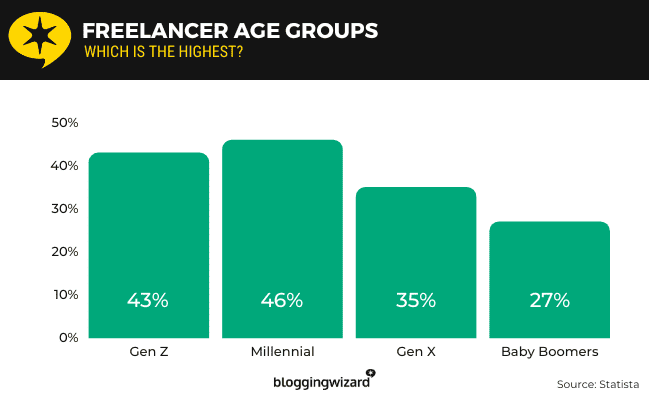
Freelancers by age group
43. The remaining 27% are freelancers born before 1965, covering Baby Boomers and older generations.
44. Millennials and Gen Z together make up nearly 70% of the global freelance workforce.
45. However, the highest earners in freelancing are in the 55 to 64 age group, showing that experience still plays a big role in income.
46. Here’s a breakdown of average hourly earnings by age group:
- Ages 18–24: $16 per hour
- Ages 25–34: $19 per hour
- Ages 35–44: $24 per hour
- Ages 45–54: $27 per hour
- Ages 55–64: $36 per hour
- Ages 65 and up: $34 per hour
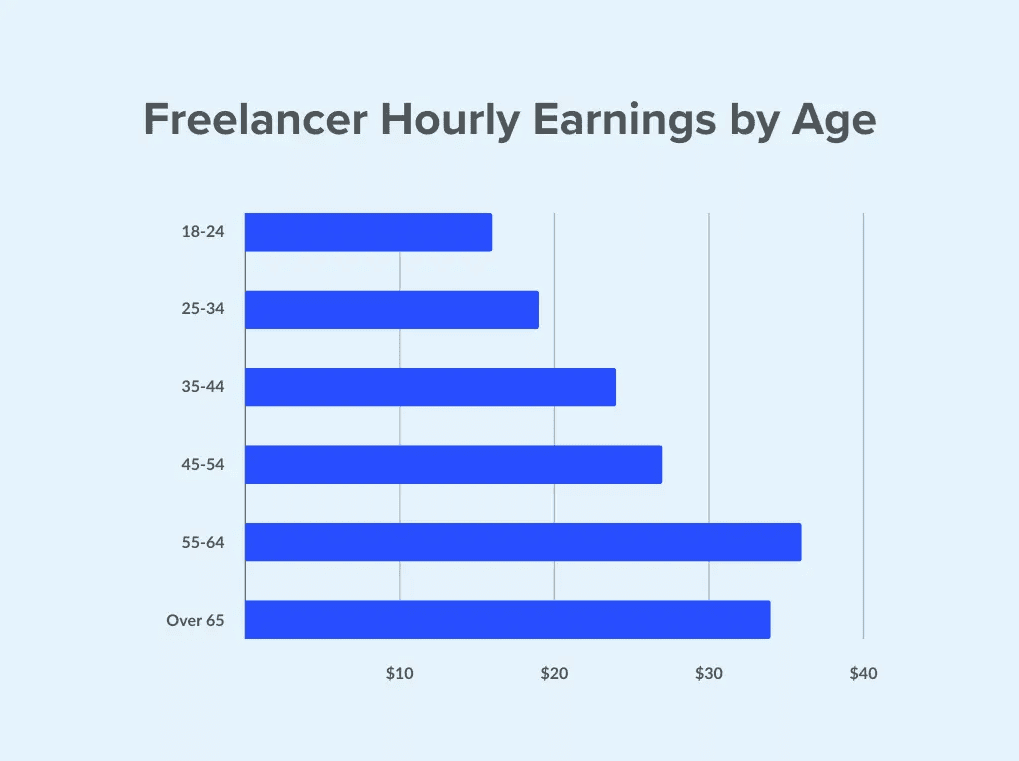
Freelancer hourly earnings by age
47. In a survey by Skynova, 80% of gig workers said they were satisfied with their work. That means 1 in 5 gig workers are not satisfied with freelance or gig-based jobs.
48. The most satisfied group in the survey was Gen Z, who reported the highest levels of happiness with their gig work.
49. Among Gen Z freelancers, 39% are Portfolio Careerists, followed by 26% Independent Consultants, 24% Moonlighters, 7% Gig Workers, and 3% Company Founders.
50. 53% of Gen Z freelancers work at least 40 hours a week, and one-third of them have been freelancing at that pace for over two years.
Number Of Freelancers By Industry
Not all industries are equally open to freelancers.
Creative work, tech, and marketing still dominate, but other fields like education, healthcare, and even law are starting to use more independent workers.
As companies adapt to more project-based and flexible models, the mix of industries hiring freelancers is slowly starting to shift.
Here are the number of freelancers stats that indicate which industries are driving freelance demand.
51. In a survey of 643 U.S. freelancers, 82% said they work as writers, and 24% of them earn over $50,000 a year from their writing alone.
52. 75% of workers in the arts and design industry are freelancers, showing how common freelance work is in creative fields.
53. In the entertainment industry, about 55% of workers are freelancers.
54. Creative fields tend to have more freelancers overall, while non-creative sectors rely less on independent workers. For example, only 21% of workers in manufacturing and production are freelancers, and in administrative support, the number is 25%.
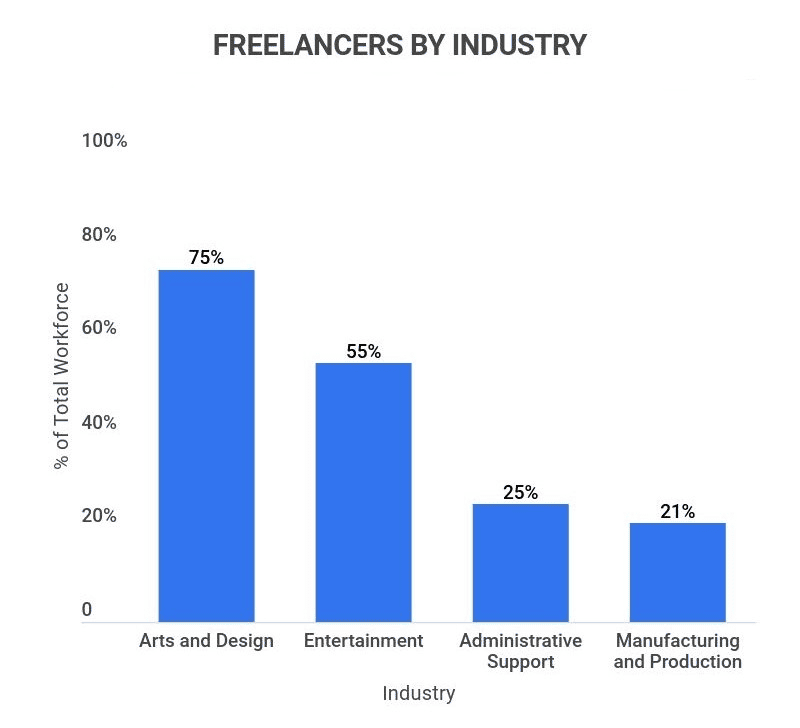
Freelancers by industry
55. More than half of small businesses (70%) in the U.S. have hired a freelancer in the last three months.
56. 81% of small business owners say they plan to use freelancers again, either regularly or in the future.
57. The demand for software developers is forecasted to grow by 25% by 2031, which is faster than most other jobs.
58. The demand for designers is also rising, with a projected growth of 23% by 2031.
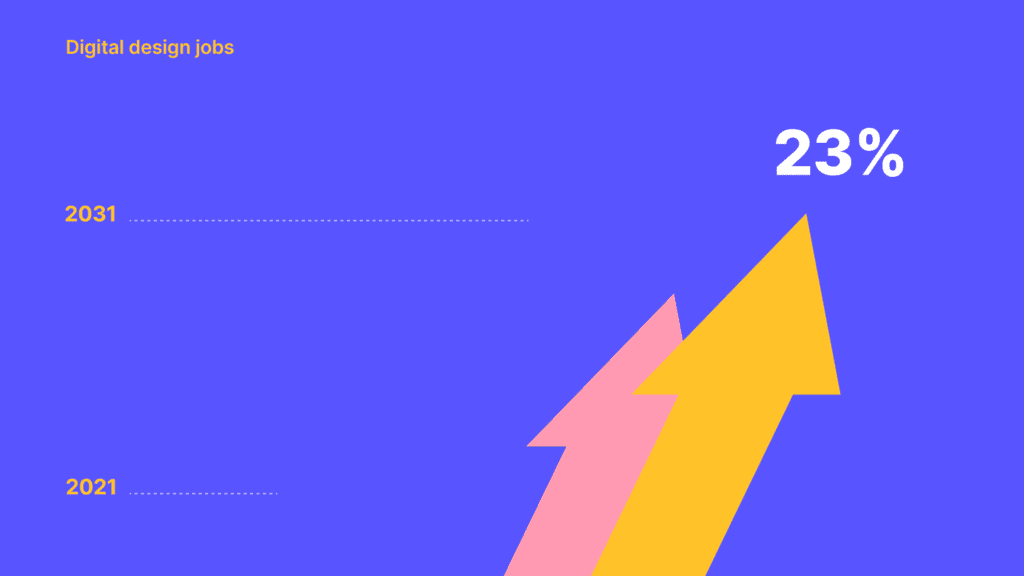
Demand for UX design jobs will continue to grow
59. Accounting is currently one of the most in-demand freelance skills, with 45% of freelancers offering it, according to Upwork.
60. Skilled services like programming, marketing, IT, and consulting are the top areas where freelancers are finding success. In 2020, 50% of U.S. freelancers provided skilled services, up from 45% in 2019, showing steady growth in professional freelance work.
Number Of Freelancers: Future Predictions (2026 & Beyond)
The future of freelancing looks anything but quiet. Experts predict that more workers will go freelance in the next few years, not just because of remote work but also due to changing attitudes about job security and career paths.
With the gig economy growing, AI reshaping some roles, and new regulations on the horizon, freelancing is set to look very different by 2026.
These freelancers’ stats reveal what’s likely coming next.
61. The freelance market is on track to reach $8.39 billion by 2025, growing from $7.33 billion in 2024 at an annual rate of 14.5%.
62. Looking ahead to 2029, projections show the market could reach $16.89 billion, with an even faster annual growth rate of 19.1%.
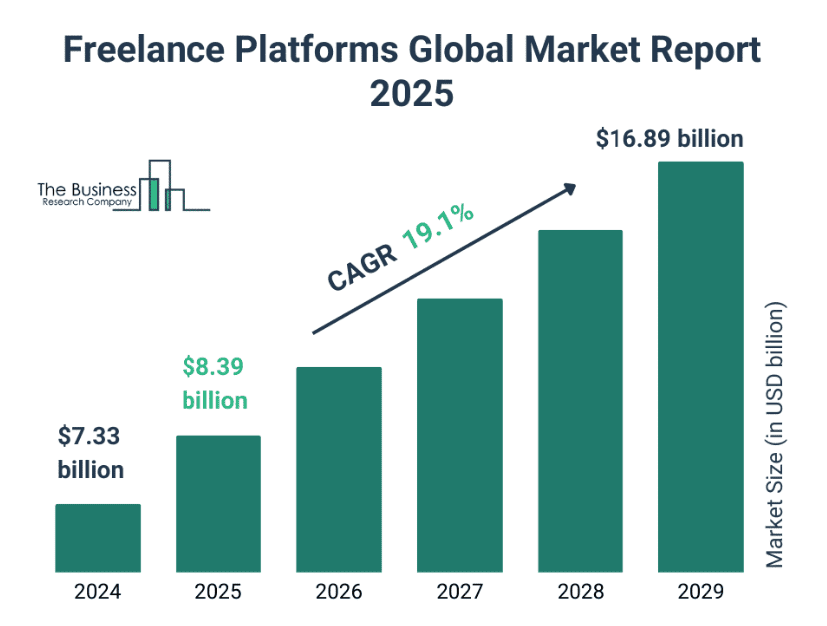
Freelance market report 2025
63. The most valuable tech skills, according to freelancers, include data analysis (14.2%), data science (11.2%), and machine learning (10.3%).
64. The freelance management system (FMS) market is expected to grow rapidly from $5.25 billion in 2023 to $17.54 billion by 2032, according to DataIntelo.
65. 73% of remote workers who aren’t freelancing yet say they’re now open to it, as working remotely has helped them become more productive.
66. Gen Z is expected to make up 30% of the U.S. workforce by 2030, and companies that adapt to their work values will be better positioned to attract top talent.
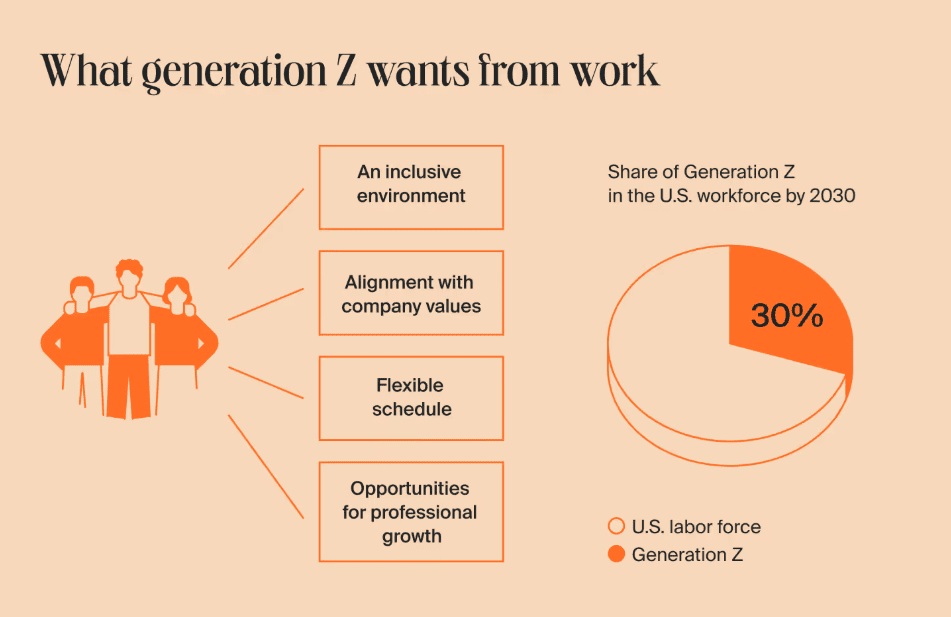
Share of Gen Z in the U.S. workforce by 2030
67. Based on current growth rates, 50.9% of Americans could be freelancing by 2027, according to projections from the Freelancing in America survey.
68. 86% of U.S. freelancers believe that freelancing has a bright future, and 71% say it’s now seen more positively as a career path.
Conclusion
Freelancing in 2025 is shaping the way the world works. With more than 1.5 billion freelancers worldwide and millions more joining each year, the shift toward independent work is undeniable.
Countries like the U.S., India, and Brazil are seeing record numbers, and even smaller markets are growing fast.
As more people embrace flexible careers and companies lean into on-demand talent, the number of freelancers is only expected to keep rising in the years ahead.


